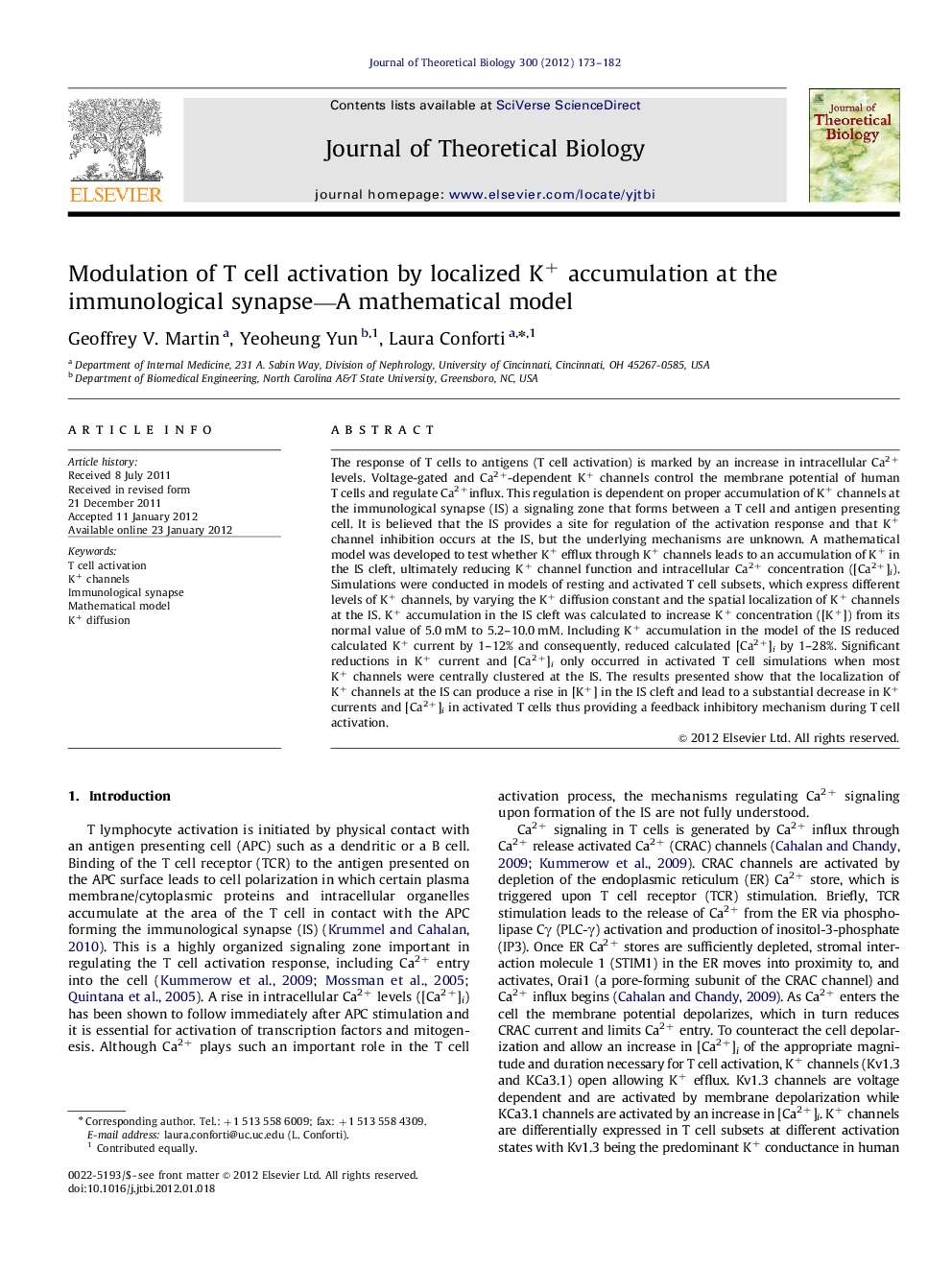| Article ID | Journal | Published Year | Pages | File Type |
|---|---|---|---|---|
| 4496762 | Journal of Theoretical Biology | 2012 | 10 Pages |
The response of T cells to antigens (T cell activation) is marked by an increase in intracellular Ca2+ levels. Voltage-gated and Ca2+-dependent K+ channels control the membrane potential of human T cells and regulate Ca2+influx. This regulation is dependent on proper accumulation of K+ channels at the immunological synapse (IS) a signaling zone that forms between a T cell and antigen presenting cell. It is believed that the IS provides a site for regulation of the activation response and that K+ channel inhibition occurs at the IS, but the underlying mechanisms are unknown. A mathematical model was developed to test whether K+ efflux through K+ channels leads to an accumulation of K+ in the IS cleft, ultimately reducing K+ channel function and intracellular Ca2+ concentration ([Ca2+]i). Simulations were conducted in models of resting and activated T cell subsets, which express different levels of K+ channels, by varying the K+ diffusion constant and the spatial localization of K+ channels at the IS. K+ accumulation in the IS cleft was calculated to increase K+ concentration ([K+]) from its normal value of 5.0 mM to 5.2–10.0 mM. Including K+ accumulation in the model of the IS reduced calculated K+ current by 1–12% and consequently, reduced calculated [Ca2+]i by 1–28%. Significant reductions in K+ current and [Ca2+]i only occurred in activated T cell simulations when most K+ channels were centrally clustered at the IS. The results presented show that the localization of K+ channels at the IS can produce a rise in [K+] in the IS cleft and lead to a substantial decrease in K+ currents and [Ca2+]i in activated T cells thus providing a feedback inhibitory mechanism during T cell activation.
► We model how extracellular K+ accumulation in the immunological synapse affects T cell ionic currents. ► Increased extracellular K+ can decrease T cell Ca2+ influx. ► The decreased Ca2+ influx is most prominent in activated T cells.
